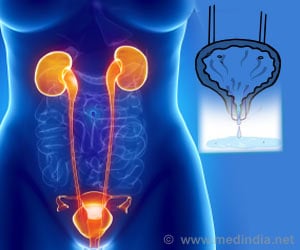Research at the University of South Australia explores the impact of pain education on persistent pelvic pain.

What women want: Female experiences to manage pelvic pain
Go to source). Persistent pelvic pain refers to ongoing pain in the lower abdominal region, often accompanied by symptoms related to gynecological issues, urinary tract problems, bowel dysfunction, sexual difficulties, or pelvic floor dysfunction.
TOP INSIGHT
One in two women in Australia experience persistent pelvic pain, affecting daily life. #pelvicpainawareness #healtheducation #medindia
Key Pain Management Concepts
In Australia, approximately half of women and individuals assigned female at birth endure persistent pelvic pain, with one out of every four individuals indicating that this pain interferes with their daily activities like work, studying, or physical exercise.This study is hoping to improve this reality through pain education concepts that have been designed for and by females with persistent pelvic pain.
Using semi-structured interviews, the consumer-centric, qualitative study captures rich and nuanced experiences of 20 females with pelvic pain who had engaged in pain science education and seen improvements.
The study identified four important pain concepts that females say can help with pain management:
- A sensitised nervous system can lead to overprotective pain - this concept is important as it provides a biological explanation for pelvic pain and validates that pain is real, and not ‘in your head’.
- Pain doesn't always mean my pelvis is damaged (although sometimes it does) – it is important because it provides reassurance that not every flare up means your pelvis is damaged or getting worse and that tissue pathology (like endometriosis lesions) is just one piece of the pelvic pain puzzle.
- How I think, feel, and 'see' my pain can make it worse – this concept speaks of how there are many factors that can influence pelvic pain. As such, there are many ways to manage pain beyond just medication or surgery.
- I can change my pain... slowly - this concept was important because it provided hope and empowerment to pursue pain improvement as a viable goal.
Transforming Pain Perception and Clinical Care for Persistent Pelvic Pain
UniSA researcher and PhD candidate Amelia Mardon says educating people about pain can help improve pain conditions.“This study addresses this gap by capturing people’s experiences of persistent pelvic pain and identifying what knowledge could help others.
Reference:
- What women want: Female experiences to manage pelvic pain - (https://www.unisa.edu.au/media-centre/Releases/2024/what-women-want-female-experiences-to-manage-pelvic-pain/)
Source-Eurekalert
 MEDINDIA
MEDINDIA




 Email
Email






